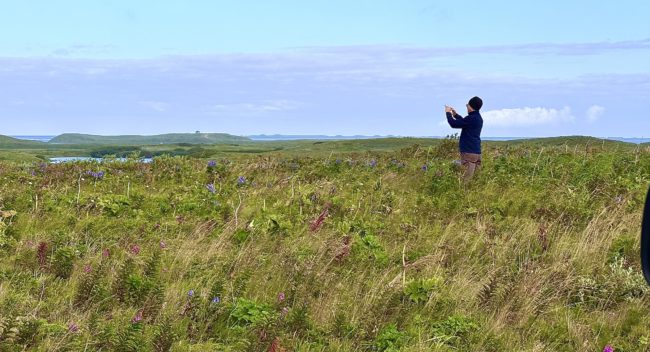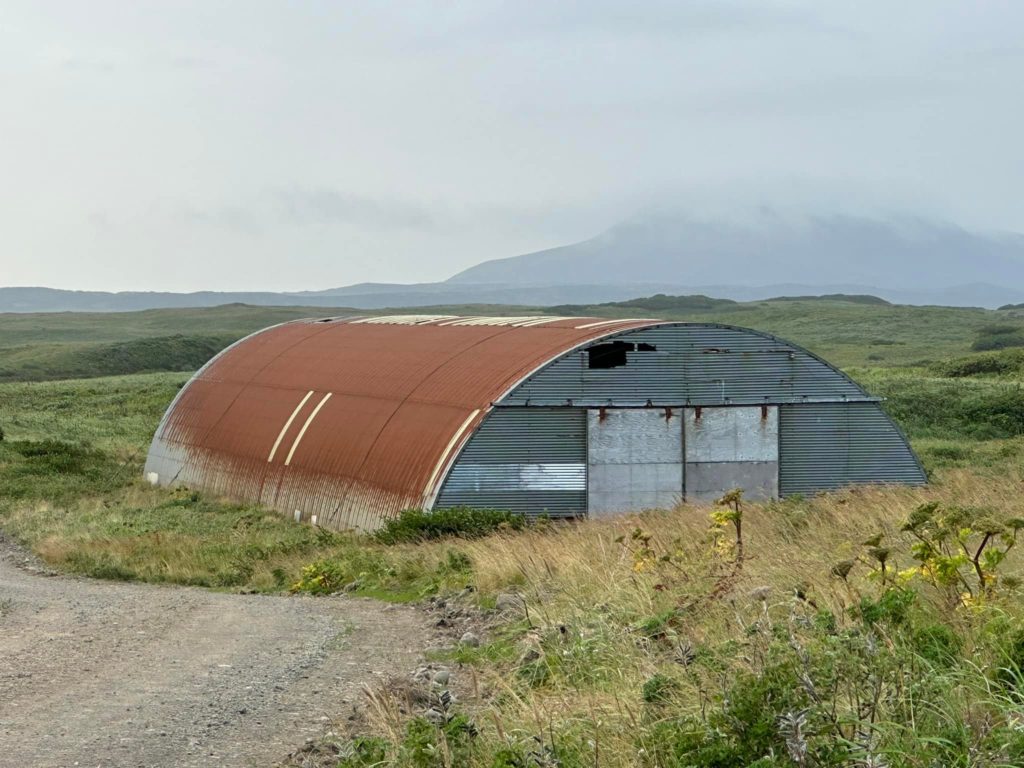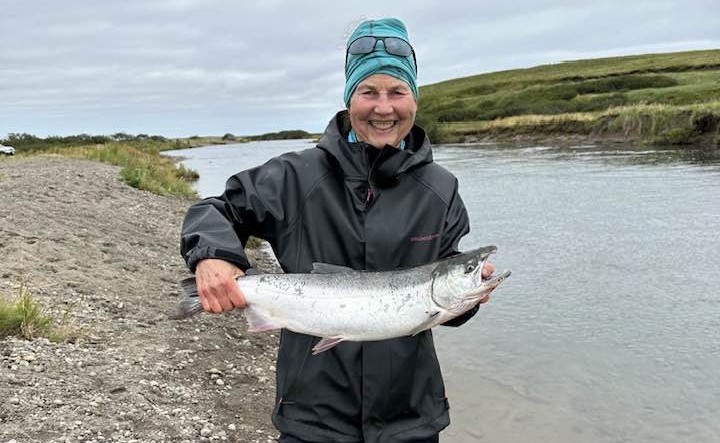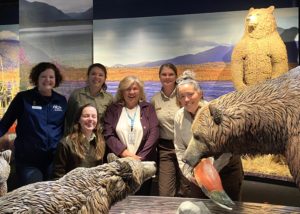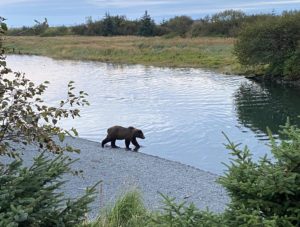by Caroline Brower, Vice President for Advocacy
Two big things are happening this month: hearings and the comment period for the Draft Coastal Plain Oil and Gas Leasing Program Supplemental Environmental Impact Statement (SEIS) for the Arctic National Wildlife Refuge and Congressional shenanigans over funding of the federal government.
First, public hearings are underway on the SEIS regarding oil leases in the coastal plain of the Arctic Refuge.
-
Virtual public meetings – October 11th at 5pm and October 17th at 1pm.
-
Anchorage – October 16 at 5 pm at the Loussac Library
-
Fairbanks rescheduled to October 23 at 5 pm at a location TBD.
The comment deadline is October 23. Please attend virtually or in person if you would like to learn more or comment on the alternatives that the U.S. Fish and Wildlife Service and the Bureau of Land Management are looking at. The schedule and more information can be found here.
For more background on this issue, see the companion article. Need help preparing comments? Write to us at info@alaskarefugefriends.org and we will get back to you.
Please note that comments don’t have to be technical or detailed. You can simply express your preference for no leasing or drilling in the refuge, and state why you feel that way.
Second, funding for wildlife refuges is up in the air again. This next federal fiscal year runs October 1, 2023-September 30, 2024, and while refuges (and the rest of the federal government) are being funded by a bill that just extended last year’s funding by 45 days, this is not a permanent fix. All 16 national wildlife refuges in Alaska are underfunded to the point that many staffing positions are not being filled, and biological, management and visitor services work across Alaska is not being completed.
It’s not just the current year’s funding issues that are a problem. Funding for refuges has been extremely low for more than a decade. In the past, refuges had enough staff to actually run programs. Each refuge had a biology team doing waterfowl, moose, or bear surveys. They had a visitor services team doing community outreach and education at the refuge and at community events and in schools. They had full maintenance teams to regrade dirt and gravel roads and maintain facilities and vehicles, or the R/V Tiglax. Today, refuges are facing losing their staff by combining with other refuges, known as “complexing”, and in most cases, they are already down to bare-bones teams of biologists and other staff members. Funding has been on the decline since FY2010, and the gap is only growing wider with the conflict on Capitol Hill this month.
Alaska’s very own Senator Lisa Murkowski is the lead Republican on the Senate subcommittee that determines funding for Alaskan wildlife refuges. She needs to hear from her constituents that the current $541 million for wildlife refuges across the country is completely insufficient, and the true need for annual funding sits at $1.5 billion. We ask that you go to Senator Murkowski’s website and send her a message that refuges need an increase in funding. You can email her here.
Thank you for continuing to be great advocates for Alaska’s wildlife refuges.
How did we get to oil leasing in the Arctic Refuge and what can you do about it? Testify!
By Marilyn Sigman, Board President
Oil and gas development has been threatening the Arctic Refuge since 1980, when Congress passed the Alaska National Interest Lands Act (ANILCA) which protected much of the refuge but in Section 1002 opened up the possibility of oil development in the refuge’s coastal plain. In ANILCA, Congress also reserved the power to decide later whether to open it to drilling, a choice which was rejected for decades, until 2017. The Tax Cuts and Jobs Act of 2017 requires the Bureau of Land Management (BLM) to hold two lease sales no later than December 22, 2024, and added “provision of an oil and gas program” to the purposes of the refuge. A Coastal Plain Oil and Gas Leasing Final Environmental Impact Statement (EIS) was completed in September, 2019.
At the first lease sale, held on January 6, 2021, only 11 of the 22 tracts offered were sold. After the sale, two of the bidders relinquished their leases, leaving the State of Alaska’s Alaska Industrial Development and Export Authority, as the sole lease owner.
Friends had joined a coalition that unsuccessfully sued the federal government to stop this first lease sale. We then intervened successfully in a lawsuit to defend the authority of the Secretary of Interior to suspend the leases in June 2021. Friends also signed on to a letter with other organizations urging the Biden Administration to: 1) cancel the 2021 leases; 2) prioritize completing a robust SEIS that will assess the climate impacts and compatibility with U.S. climate goals; and 3) recognize the human rights issues for the Alaska Native communities that rely on Arctic Refuge resources.
Secretary of Interior Deb Haaland initially suspended the leases after a determination of an inadequate NEPA review and an illegal sale, and then canceled them outright on September 6, 2023. She said at the time: “With today’s action, no one will have rights to drill in one of the most sensitive landscapes on Earth. Climate change is the crisis of our lifetime. And we cannot ignore the disproportionate impacts being felt in the Arctic. We must do everything within our control to meet the highest standards of care to protect this fragile ecosystem.”
The second lease sale is now proceeding as required by the 2017 Tax Act. The Supplementary EIS (SEIS) is the Department of Interior’s attempt to remedy the inadequacies of the first EIS which led to the cancellation of the first leases.
What’s Being Considered in the SEIS and how should we comment?
The BLM has listed out 4 Alternatives. Alternatives B, C, and D propose leasing over a range of acreage from 49 to 100 percent of the 1.56 million-acre Coastal Plain. According to the SEIS, each of these three alternatives balances the five statutory purposes of the Arctic Refuge, the oil and gas leasing program and the four original purposes of conserving animals and plants in their natural diversity, ensuring subsistence hunting and gathering activities, protecting water quality and quantity, and fulfilling international wildlife treaty obligations.
Alternative A is the No-Action or no leasing Alternative, and would be our choice. The BLM, however, has determined that Alternative A does not meet the ‘purpose and need’ of the SEIS because it does not meet the requirements of the 2017 Tax Act to hold a lease sale, and is therefore not considering it. Friends have long opposed leasing of the Arctic Refuge, and will submit comments supporting action with the least impacts to the purposes for which Arctic Refuge was established. A robust showing of support from Alaskans for the strongest possible environmental protection of the Coastal Plain in your SEIS comments could discourage future investments in oil and gas leases in the Refuge and hopefully encourage BLM to reconsider their approach to Alternative A.
The Record of Decision that will follow the SEIS review will not authorize exploration and development but will determine which lands will be offered for lease and under what terms. Please see our advocacy column above for the schedule of public meetings on the SEIS and ways to submit comments by the deadline of October 23, 2023.
Photo: The Porcupine caribou herd travels ancient trails and fords many rivers to get to and from their calving grounds on the Arctic coastal plain and their wintering area in the mountains of Alaska and Canada. It is the largest land migration in the world. The calving grounds are under threat of oil and gas development in spite of the recent lease sale cancellations because of the 2017 Tax Cuts and Jobs Act which requires lease sales and made an oil and gas program a purpose. pc: Marilyn SIgman
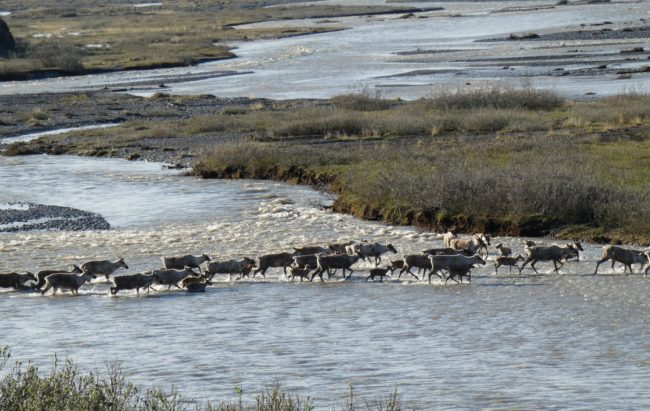
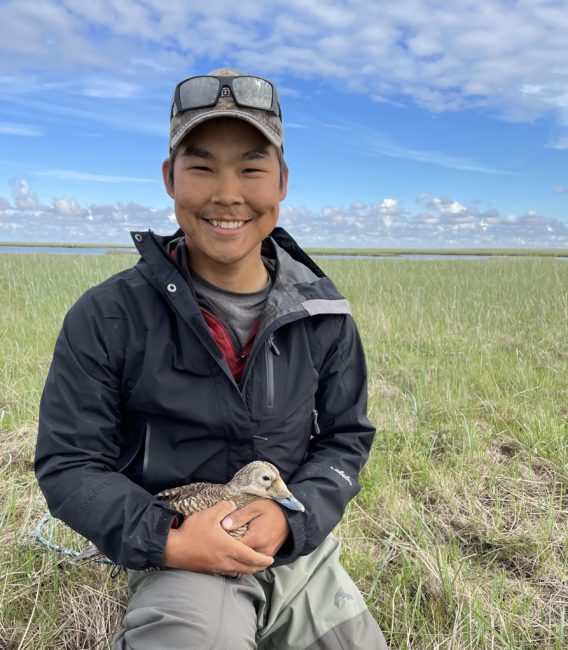
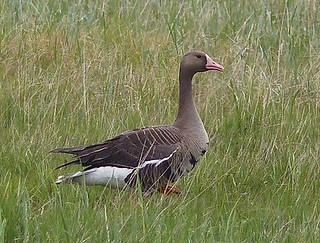 Greater White-fronted Goose, Kigigak Island, Yukon Delta National Wildlife Refuge pc: Kristine Sowl, USFWS
Greater White-fronted Goose, Kigigak Island, Yukon Delta National Wildlife Refuge pc: Kristine Sowl, USFWS
